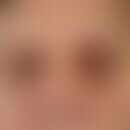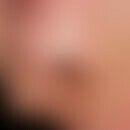Synonym(s)
HistoryThis section has been translated automatically.
DefinitionThis section has been translated automatically.
Caused by the yellow fever virus (flavivirus). It is transmitted by the bite of the yellow fever mosquito (zoonosis/arbovirosis). Yellow fever belongs to the viral hemorrhagic fever diseases. Both humans and monkeys can serve as hosts for the virus. For many monkey species, especially those living in Africa, infection is harmless. Direct transmission of the yellow fever virus from one human to another is not possible.
You might also be interested in
PathogenThis section has been translated automatically.
Yellow fever virus belongs to the Flaviviridae family. The virion has a diameter of 40-50 nm and is surrounded by a lipid envelope. Replication of the virus takes place in the cytoplasm of host cells and is closely associated with the endoplasmic reticulum. The mature virions reach the cell surface where they are shed by exocytosis or lysis of the cell.
The reservoir is monkeys. Cultivation in mice, chicken embryos and in several mammalian as well as in Aedes cell lines is possible. Genetic differences in RNA exist between African and South American strains of yellow fever (3 topotypes isolated in Africa to date).
Occurrence/EpidemiologyThis section has been translated automatically.
Occurs in Africa and South America in the so-called yellow fever belt: in Africa between latitude 16° north and latitude 10° south and between longitude 18° west and longitude 50° east. In South America, between 90th longitude and 40th longitude, and 10th north latitude and 40th south latitude. No occurrence in Asia, Europe and Australia.
Largest epidemic to date in Ethiopia (1960-1962) with about 100,000 cases and about 30,000 deaths.
Enzootic cycle: Zoonosis of monkey population by mosquitoes in tropical jungle.
Jungle fever: transmission from monkeys to humans by mosquitoes in marginal areas of the jungle.
Urban fever: human-to-human transmission by mosquitoes (Aedes aegypti).
Vectors: Aedes, Haemagogus and Sabethes species.
Note: In 2016, no cases of yellow fever were reported to the Robert Koch Institute in Germany. In 1999, one case occurred. The disease affected a traveler returning from the Republic of Ivory Coast.
ClinicThis section has been translated automatically.
- The majority of infections are inapparent or nonspecific. Incubation period: 3-6 days. The focus is on internal and general symptoms. The integument is characterized in particular by icterus, hemorrhages and purpura (also mucosal bleeding, especially nosebleeds).
- Initial or infectious stage: abrupt onset with high fever, headache, myalgias, nausea and vomiting, relative bradycardia (Faget sign), onset of bleeding tendency (red stage), risk of infection on contact with blood.
- Remisson (period of calm): may pass into recovery or the manifestation or intoxication stage.
- Manifestation or intoxication stage: jaundice, proteinuria, gastrointestinal bleeding with vomito negro(coffee grounds vomiting), melaena, metorrhagia, skin and mucosal bleeding, hypothermia, singultus, hypotension, hypokalemia, oliguria with subsequent hepatic and renal failure, delirium, hypovolemic shock.
LaboratoryThis section has been translated automatically.
- Bilirubinemia
- Prothrombin waste
- Prolongation of the bleeding time
- Waste of serum proteins
- Increase in transaminases
- Proteinuria
- Increase in urinary substances.
DiagnosisThis section has been translated automatically.
Serum antibodies
Virus isolation in blood and autopsy material
ST segment depression in the ECG.
Differential diagnosisThis section has been translated automatically.
TherapyThis section has been translated automatically.
ProphylaxisThis section has been translated automatically.
- 17 D vaccine from chicken embryos infected with vaccine virus (live vaccine).
Notice! Note allergies to chicken egg protein and immunosuppression (previous illness and medication). There is a special feature for the indication of yellow fever vaccination as a travel vaccination, since an age of 60 years and older is to be regarded as a "relative contraindication" due to the higher risk of severe to possibly lethal vaccine-associated diseases. This includes, above all, the neurological disease known as "Yellow fever-associated neutrotopic disease" (YELAND). Another severe vaccine-associated, often fulminant disease is the "Yellow fever-associated viscerotropic disease" (YEL-AVD) with fever, myalgia, drop in blood pressure, muscle and liver cytolysis, lymphopenia, kidney failure and respiratory arrest. Note: According to WHO data from May 2013, after 10 years no booster vaccination is required. In practice, however, some countries (e.g. Brazil) require a 2nd yellow fever vaccination.
- Mosquito protection and control.
- In epizootic and urban yellow fever outbreaks, accelerated mass vaccination, prevention of population exodus and mosquito control measures.
Note(s)This section has been translated automatically.
Remember! Quarantine and reporting obligation in case of suspicion, illness or death.
- Current map of yellow fever endemic countries: e.g. http://wwwn.cdc.gov/travel/yellowBookCh4-YellowFever.aspx.
LiteratureThis section has been translated automatically.
- Barnett ED (2007) Yellow fever: epidemiology and prevention. Clin Infect Dis 2007 44: 850
- Centers for Disease Control and Prevention (2003) Health information for international travel 2003-2004, US Dept Health and Human Services Atlanta.
- MMWR (2002) Adverse events associated with 17D-derived yellow fever vaccination in USA 2001-2002. MMWR Morb Mortal Wkly Rep 51: 989
- Monath TP (2003) Yellow fever vaccine. In: Plotkin S, Orenstein W, (eds) Vaccines. 4th Ed, WB Saunders Philadelphia, pg. 1095.
Incoming links (10)
active vaccination; Classification of viruses; Flaviviridae; Hepatitis c virus; Live attenuated vaccines; Reporting requirement; Vaccination damage; Yellow fever-associated neutrotopic disease; Yellow fever-associated viscerotropic disease; Yellow fever vaccination;Outgoing links (9)
Acute hepatitis; Hemorrhagy; Icterus; Leptospirosis; Malaria; Poisoning; Purpura (overview); Q fever; Rift valley fever;Disclaimer
Please ask your physician for a reliable diagnosis. This website is only meant as a reference.







